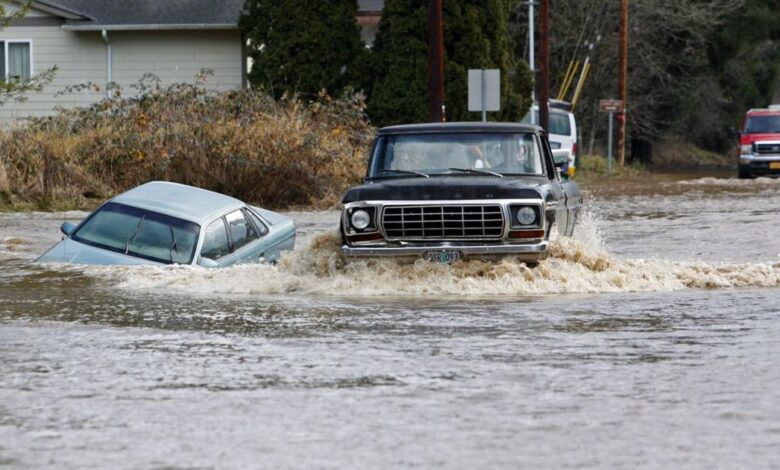
Understanding hydrologic outlooks has become crucial in an era where climate change and unpredictable weather patterns dominate headlines. This term, often overlooked in the barrage of meteorological forecasts, plays a vital role in predicting and managing water-related phenomena, especially floods. As we enter 2024, the relevance of hydrologic outlooks in mitigating the impacts of flooding and preserving both human and ecological well-being cannot be overstated.
The Essence of Hydrologic Outlooks
A hydrologic outlook is a forecast focusing on the occurrence, severity, and timing of water-related events, particularly floods. These outlooks are typically issued by meteorological agencies and provide a long-term prediction of water patterns in rivers, lakes, and overall watersheds. Unlike weather forecasts offering a short-term view of meteorological conditions, hydrologic outlooks give a broader and more extended perspective, often covering weeks or months. This long-range forecast is crucial for water resource management, flood risk assessment, and environmental conservation.
Importance in Flood Predictions
The primary role of a hydrologic outlook is in flood prediction and management. Floods have become more frequent and severe with the onset of climate change. Hydrologic perspectives provide an early warning system that helps communities and governments prepare for potential flooding. These predictions consider snowmelt, rainfall, soil moisture, and river flow rates. By analyzing this data, hydrologists can predict the likelihood of flooding, allowing for timely evacuation plans, reinforcement of flood defenses, and allocation of emergency resources.
Technological Advancements in Hydrology
In 2024, technology plays a pivotal role in enhancing the accuracy and reliability of hydrologic outlooks. Advanced computer models, satellite imagery, and remote sensing technologies have revolutionized how hydrologists monitor and predict water patterns. These tools enable a more detailed and real-time analysis of hydrologic conditions. Moreover, AI and machine learning algorithms have been integrated into these systems, making predictions more accurate and enabling the processing of extensive data sets more efficiently. This technological leap has improved the accuracy of hydrologic outlooks and allowed for more nuanced and region-specific forecasts.
Challenges in Accurate Predictions
Despite technological advancements, predicting hydrologic events with absolute accuracy remains a challenge. Factors such as sudden weather changes, human alterations to landscapes, and unforeseen natural circumstances can dramatically alter water behavior, leading to deviations from predicted outcomes. Additionally, the varying impacts of climate change across different regions make it difficult to create a one-size-fits-all model for hydrologic predictions. This unpredictability necessitates continuous monitoring and updating of hydrologic models to maintain their relevance and accuracy.
Impact on Communities and Ecosystems
Hydrologic outlooks have a profound impact on both human communities and ecosystems. Accurate predictions can significantly reduce the loss of life and property damage caused by floods. They enable better planning and resource allocation, reducing the economic burden of flood events. On an ecological front, these outlooks assist in managing water resources, preserving aquatic habitats, and maintaining the health of riverine ecosystems. Moreover, they play a crucial role in sustainable development, ensuring that water resources are managed to support both human needs and environmental conservation.
Future of Hydrologic Outlooks
Looking towards the future, the field of hydrology is poised to evolve further. The integration of more advanced technologies, increased global cooperation in data sharing, and a greater emphasis on sustainable practices are expected to enhance the effectiveness of hydrologic outlooks. There is also a growing recognition of the need to incorporate socio-economic factors into these models, understanding that the impact of water-related events extends beyond the physical to the societal realm. This holistic approach will likely lead to more comprehensive and actionable hydrologic outlooks in the future.
Integration with Emergency Response Systems
Integrating hydrologic outlooks with emergency response systems marks a significant advancement in disaster management. When effectively combined with local and national emergency protocols, these outlooks can significantly enhance the speed and efficiency of response to flood events. Governments and disaster management teams can use these forecasts to proactively activate emergency plans, mobilize resources, and coordinate with different agencies. This synergy between hydrologic data and emergency response mechanisms is crucial for minimizing the impact of floods on communities.
Public Awareness and Community Involvement
Public awareness and community involvement are vital in leveraging the benefits of hydrologic outlooks. Educating the public about the implications of these forecasts and what actions to take in response is essential. Communities that are well-informed and actively participate in preparedness activities tend to fare better during flood events. Local workshops, educational campaigns, and social media platforms can significantly disseminate information and foster a culture of readiness.
Climate Change and Its Implications
The role of climate change in altering hydrologic patterns cannot be overstated. As global temperatures rise, the hydrologic cycle intensifies, leading to more extreme weather events, including severe flooding. This change challenges the existing hydrologic models, requiring continuous adaptation and refinement. Understanding how climate change impacts hydrologic systems is critical for developing more accurate and resilient hydrologic outlooks, essential for effective water resource management and flood mitigation strategies.
Economic Impacts and Risk Management
Hydrologic outlooks have substantial economic implications, particularly in risk management. These forecasts are crucial for operational planning and risk mitigation for industries dependent on water resources, such as agriculture, energy, and transportation. Insurance companies rely heavily on these outlooks to assess flood risks and determine insurance premiums. Hydrologic perspectives play a pivotal role in economic planning and decision-making by providing a predictive glimpse into water-related threats.
Environmental Conservation and Water Management
Environmental conservation and sustainable water management are deeply intertwined with hydrologic outlooks. These forecasts provide valuable insights for sustainably managing water resources and ensuring adequate water supply for human consumption, agriculture, and industry while preserving natural ecosystems. They also help identify potential environmental risks associated with floods, such as habitat destruction and water pollution, enabling proactive conservation efforts.
Advancing Research and Education in Hydrology
The future of hydrologic outlooks is also linked to advancements in research and education within the field of hydrology. Encouraging academic pursuits, funding research projects, and fostering international collaboration can significantly advance hydrological sciences. As more is understood about the complexities of the hydrologic cycle and its interactions with human activities and climate systems, the more refined and accurate hydrologic outlooks will become. Investing in education and research is critical to developing the next generation of hydrologists who will continue to advance this crucial field.
In conclusion, hydrologic outlooks are multifaceted tools that extend beyond mere predictions. They are integral to disaster management, economic planning, environmental conservation, and academic research. As we continue to face the challenges of climate change and increasing water-related risks, the importance of these outlooks and the need for their continuous evolution becomes ever more apparent.



